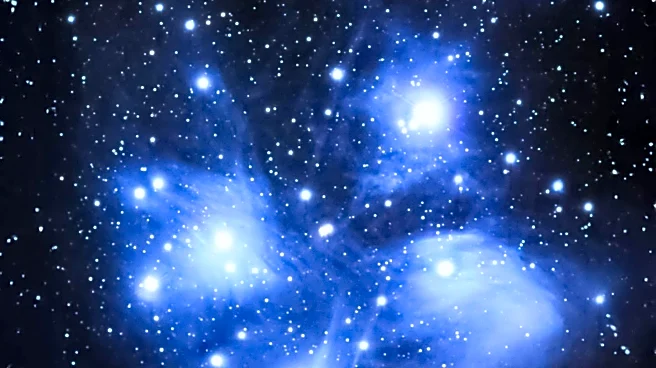What's Happening?
The open cluster M34, located in the constellation Perseus, is visible in the night sky, offering a celestial treat for stargazers. Positioned approximately 5° west-northwest of the variable star Algol, M34 reaches an altitude of 40° in the east by 9
P.M. local daylight time. With an apparent magnitude of 5.5, the cluster is potentially visible to the naked eye from dark-sky locations. Comprising around 100 stars, M34 is estimated to be 180 million years old and spans an angular diameter equivalent to that of the Full Moon.
Why It's Important?
The visibility of M34 provides an opportunity for amateur astronomers and sky enthusiasts to observe a relatively young star cluster. This event highlights the richness of the night sky and encourages interest in astronomy. Observing such clusters can enhance understanding of stellar formation and evolution, as well as the dynamics of star clusters within our galaxy. M34's visibility from dark-sky locations underscores the importance of preserving these areas for astronomical observation.
What's Next?
Stargazers are encouraged to use binoculars or telescopes to view M34, as lower magnifications reveal the cluster's full extent, while higher magnifications resolve fainter individual stars. As the constellation Perseus rises higher in the sky, observers can explore other celestial treasures within the constellation. The ongoing observation of M34 and similar clusters contributes to the broader field of astrophysics, offering insights into the life cycles of stars and the structure of our galaxy.















